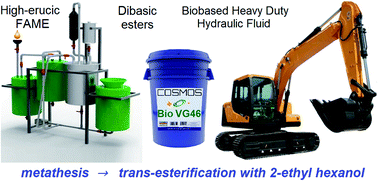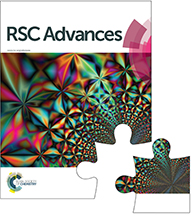Conversion of fatty acid methyl esters into dibasic esters by metathesis and their lubricant properties†
Abstract
Biodiesel plants are struggling to find value added applications for fatty acid methyl esters (FAME). One option for FAME valorization would be dibasic esters, which can be transesterified with 2-ethylhexyl (2EH) or other alcohols to produce lubricant basestocks and achieve the most widespread viscosity grades VG46 and VG32. Biocatalytic, metathesis and other synthetic pathways are available to produce dibasic esters. Using a ruthenium-based catalyst, methyl oleate was converted into monounsaturated dibasic ester by metathesis and reached VG22 after transesterification with 2EH in this investigation. Synthesized 2EH esters of other dibasic acids showed distinct viscometric trends. Their correlation implied that FAME from gondoic and erucic acids should result in VG32 and VG46 respectively, if converted into 2EH dibasic esters. Pour points demonstrated excellent low temperature fluidity and resistance to heat thinning when monounsaturation was retained. Oxidative stability properties remained acceptable, volatility was lower than that of VG46 mineral oils. Mixed alcohols, acids and esters can also be used for meeting VG specifications or achieving higher biobased contents. Currently petrochemical ester basestocks dominate in high performance hydraulic fluids (HF). However, fractionation of FAME into high-erucic/gondoic esters in biodiesel plants can produce a valuable biobased feedstock for large volume manufacture of HF and other lubricants.



 Please wait while we load your content...
Please wait while we load your content...